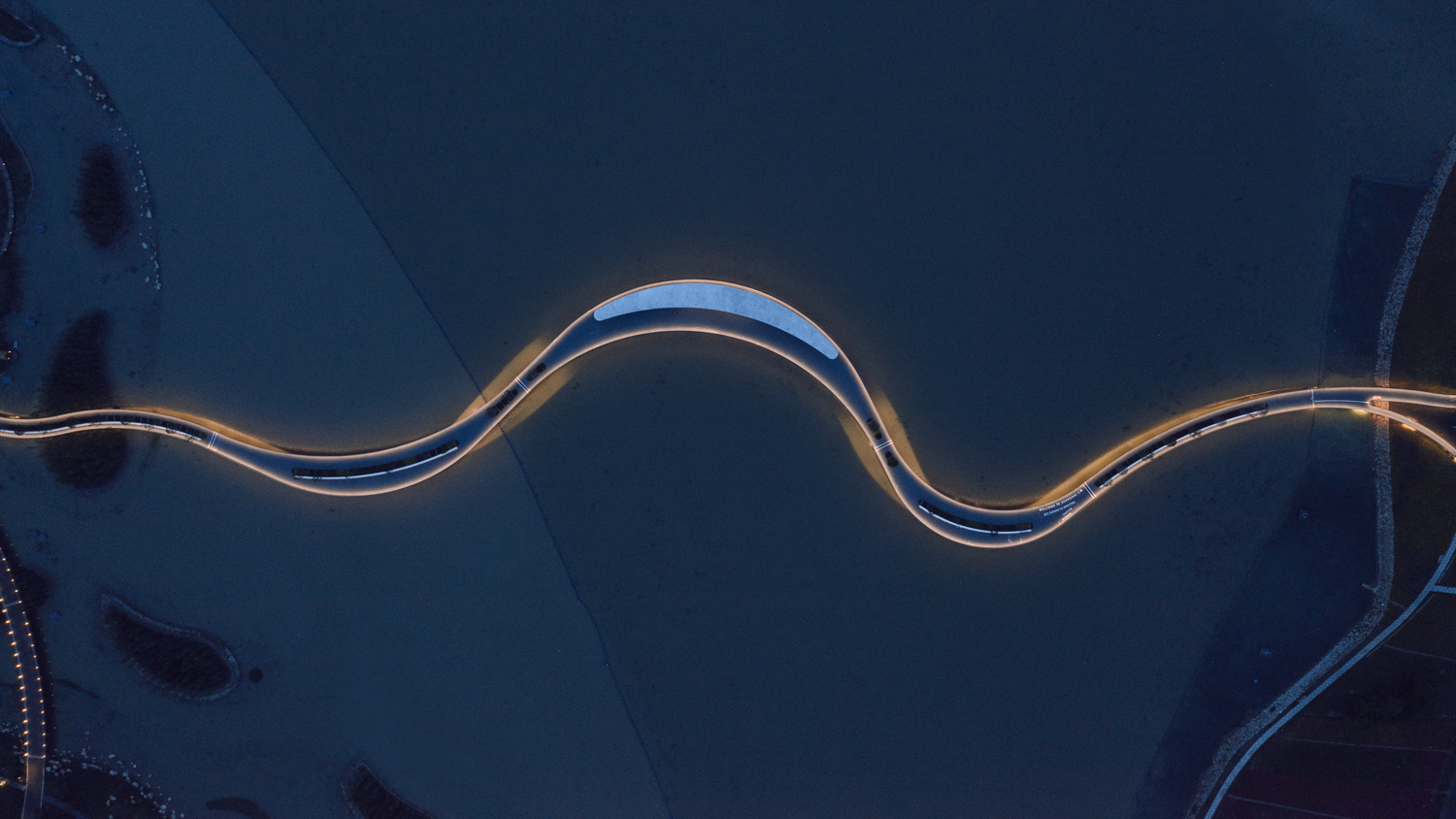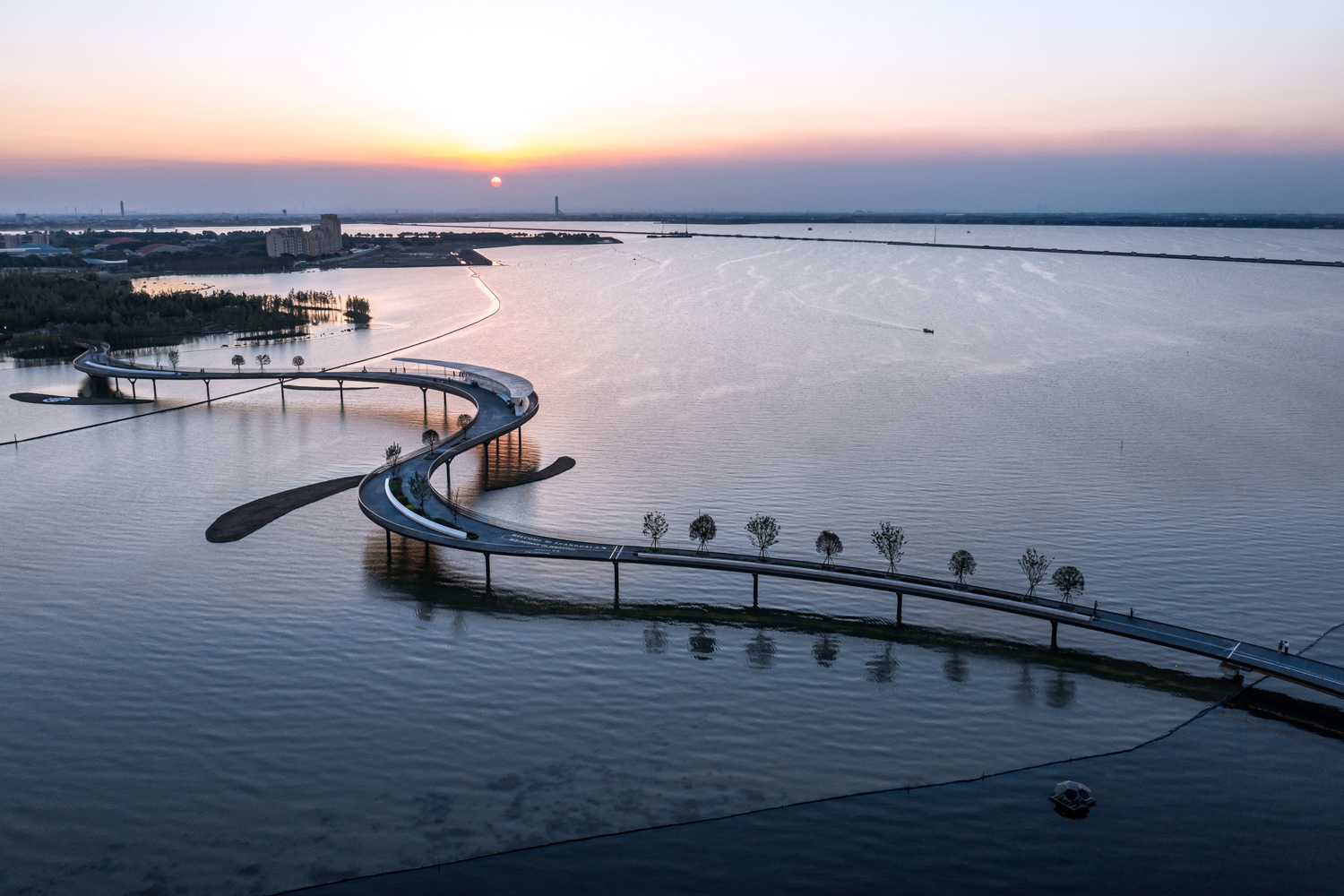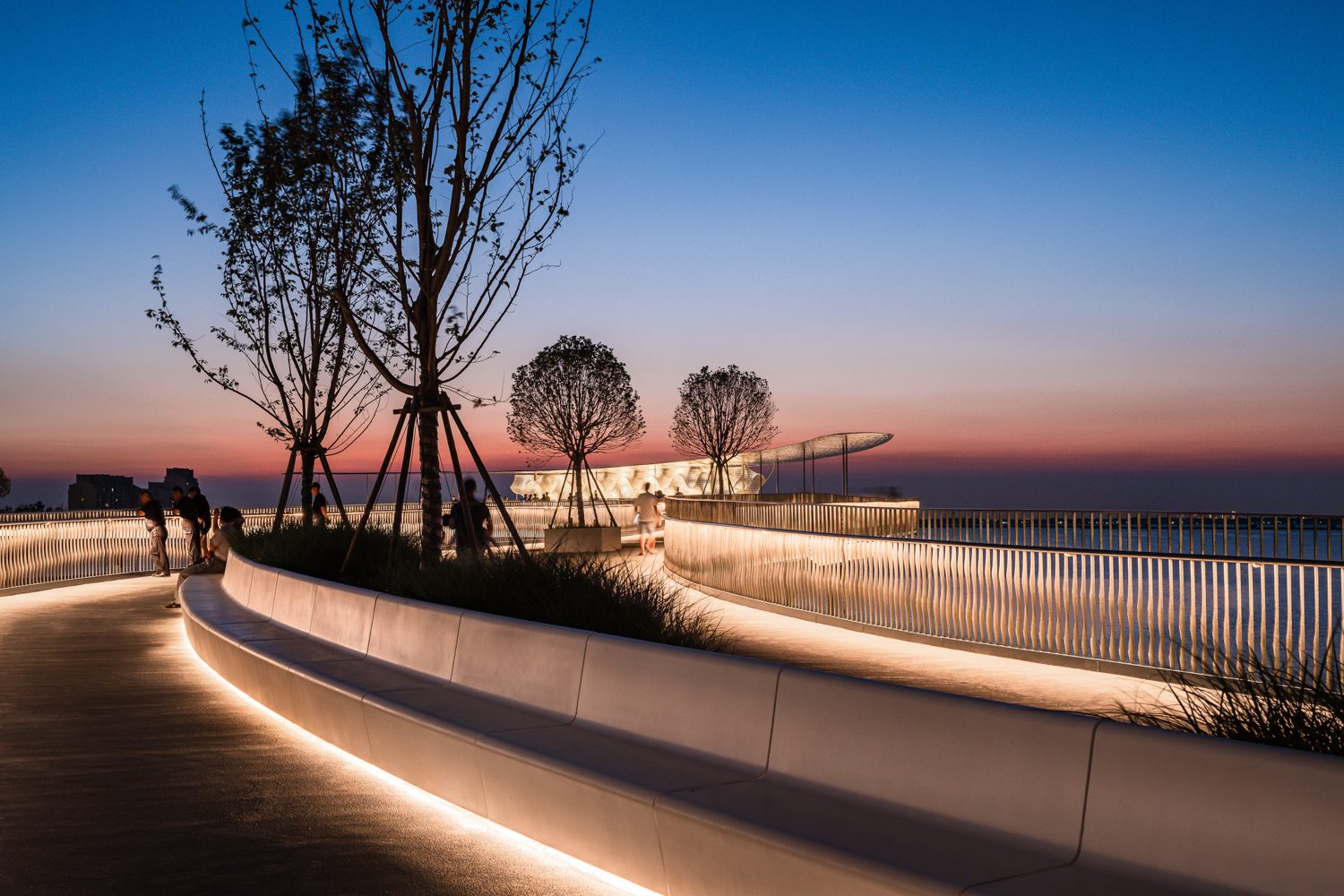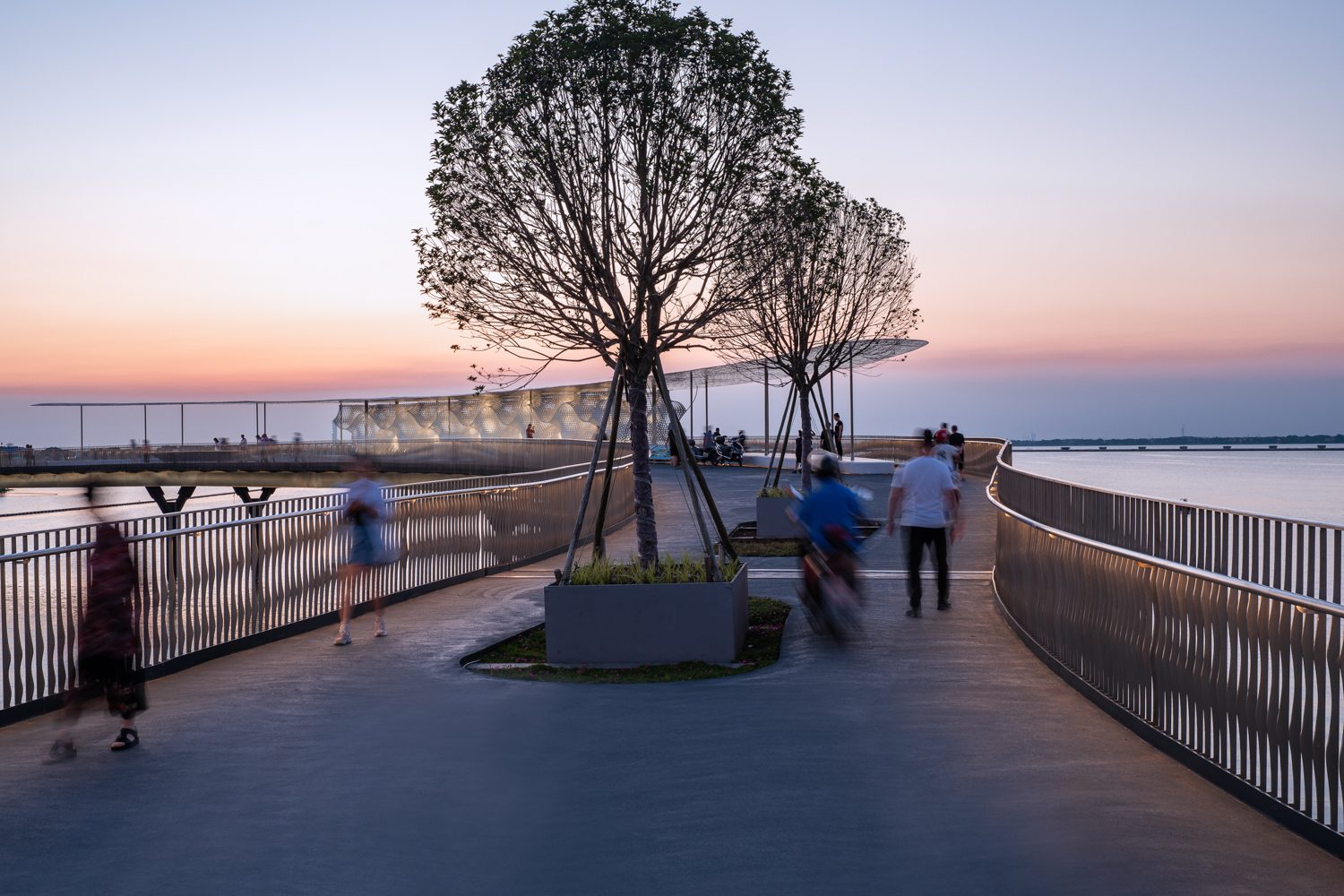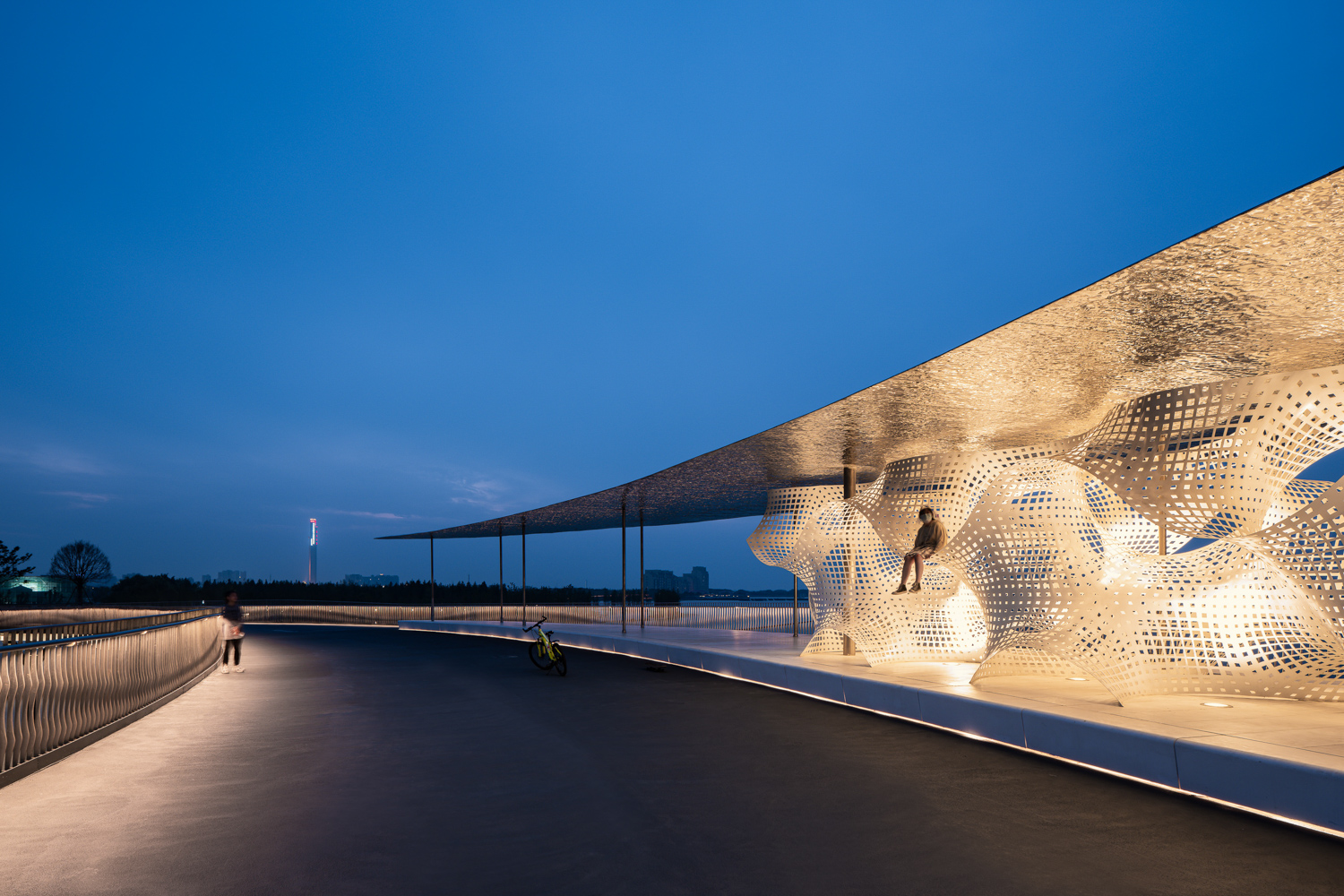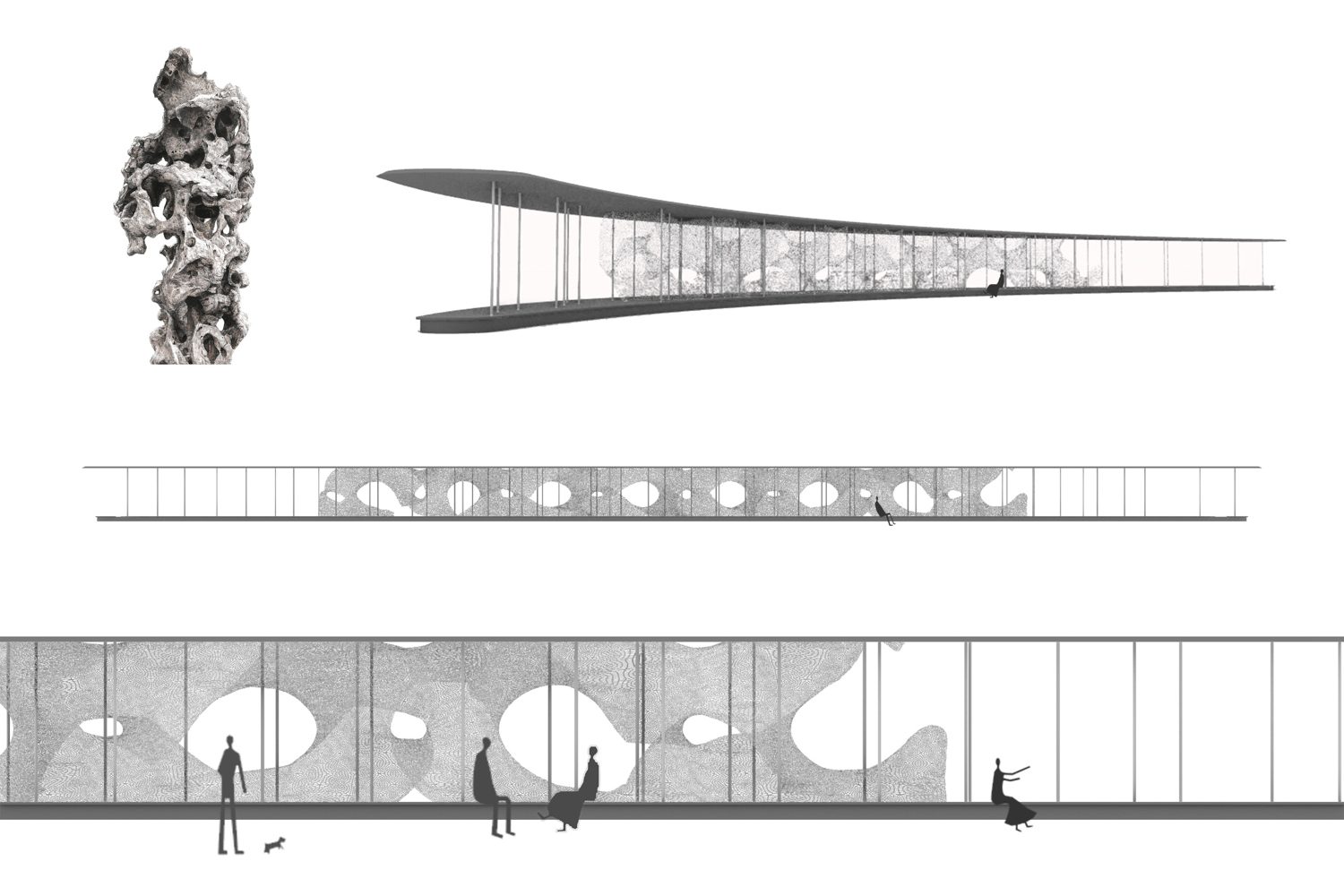INTEGRATING THE FLOATING GARDEN, BICYCLES AND PEDESTRIAN LANES, AND LOCAL CULTURE, YUANDANG BRIDGE FROM BREARLEY ARCHITECTS + URBANISTS (BAU) REFLECTS THE IDENTITY OF YUANDANG LAKE UNDERNEATH THROUGH WINDING SHAPE
TEXT: PRATCHAYAPOL LERTWICHA
PHOTO: ZHU RUNZI
(For Thai, press here)
Brearley Architects + Urbanists (BAU), the architecture team with offices based in China and Australia, has designed a bike and pedestrian bridge whose winding shape resembles a flowing body of water on Yuandang Lake where Jiangsu province and Shanghai connect.
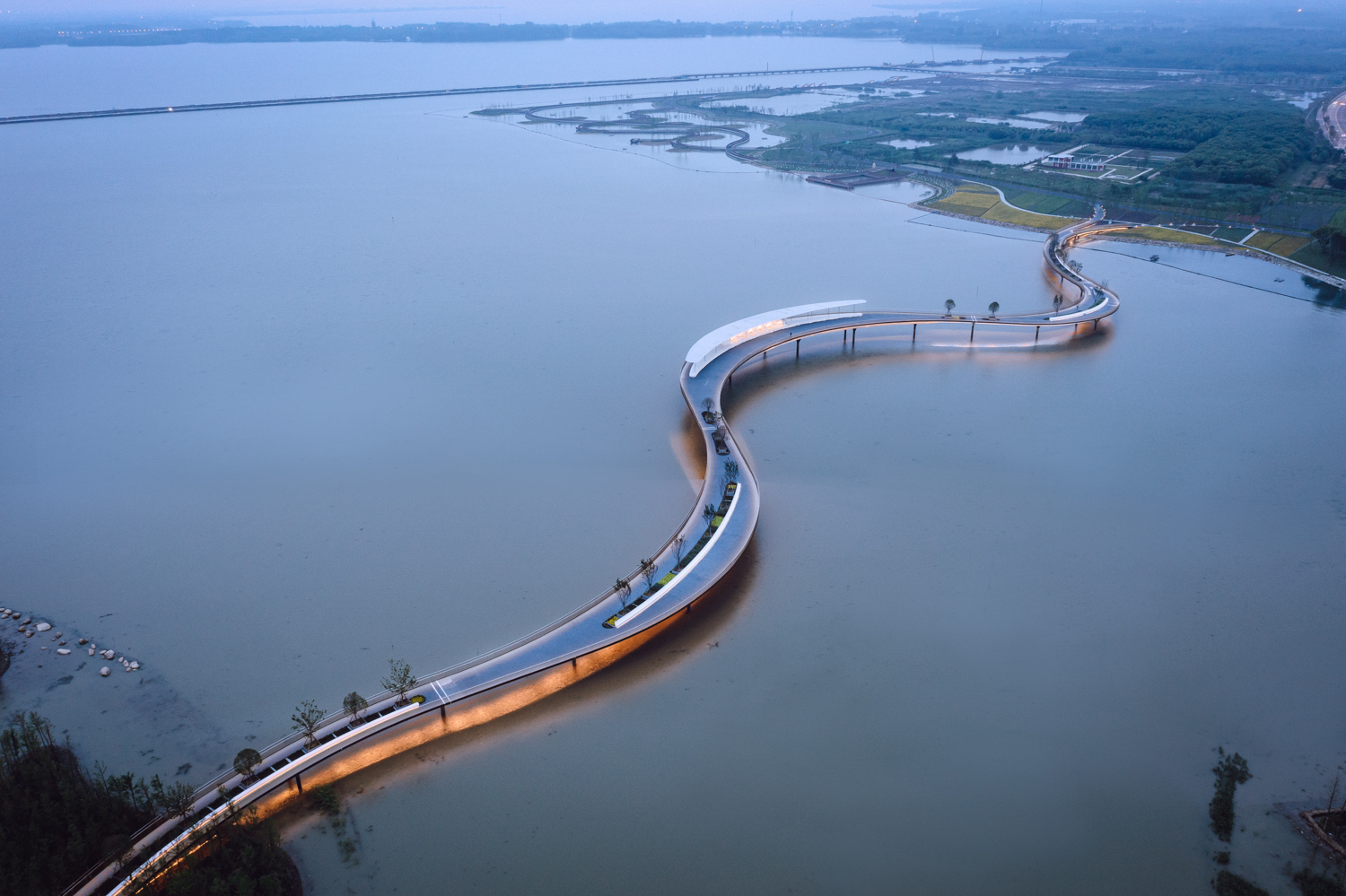
Yuandang Bridge is the 586-meter beam bridge that stretches across Yuandang Lake, linking the western border of Jiangsu province to the east of Shanghai together. The bridge comprises lanes for bicycles and pedestrians with rows of planters with growing trees in the middle, connecting the green spaces on the two areas of wetland. Looking at the bridge from a distance, the planters have managed to turn the structure into a garden in the middle of the lake’s expansive aquatic mass.

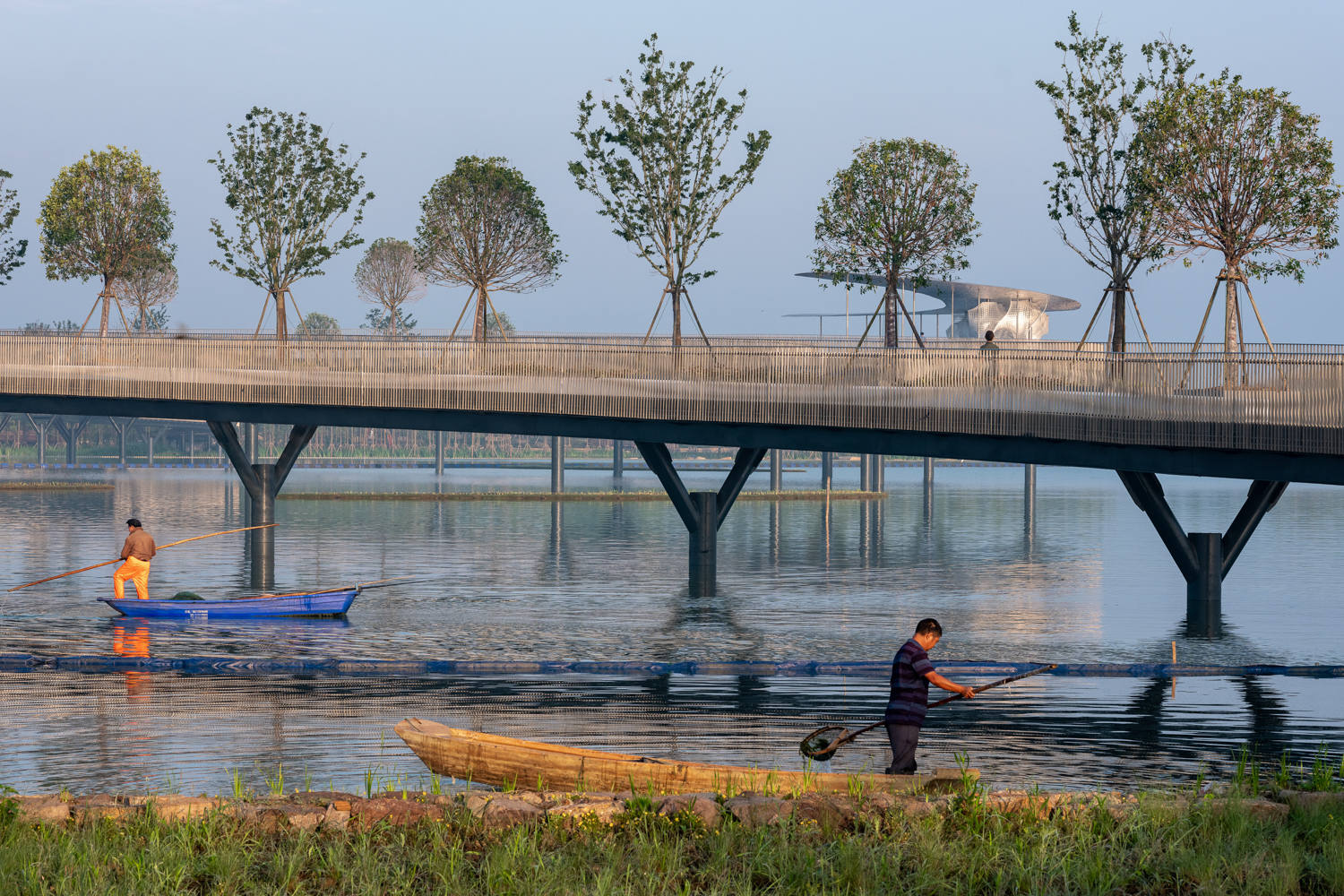
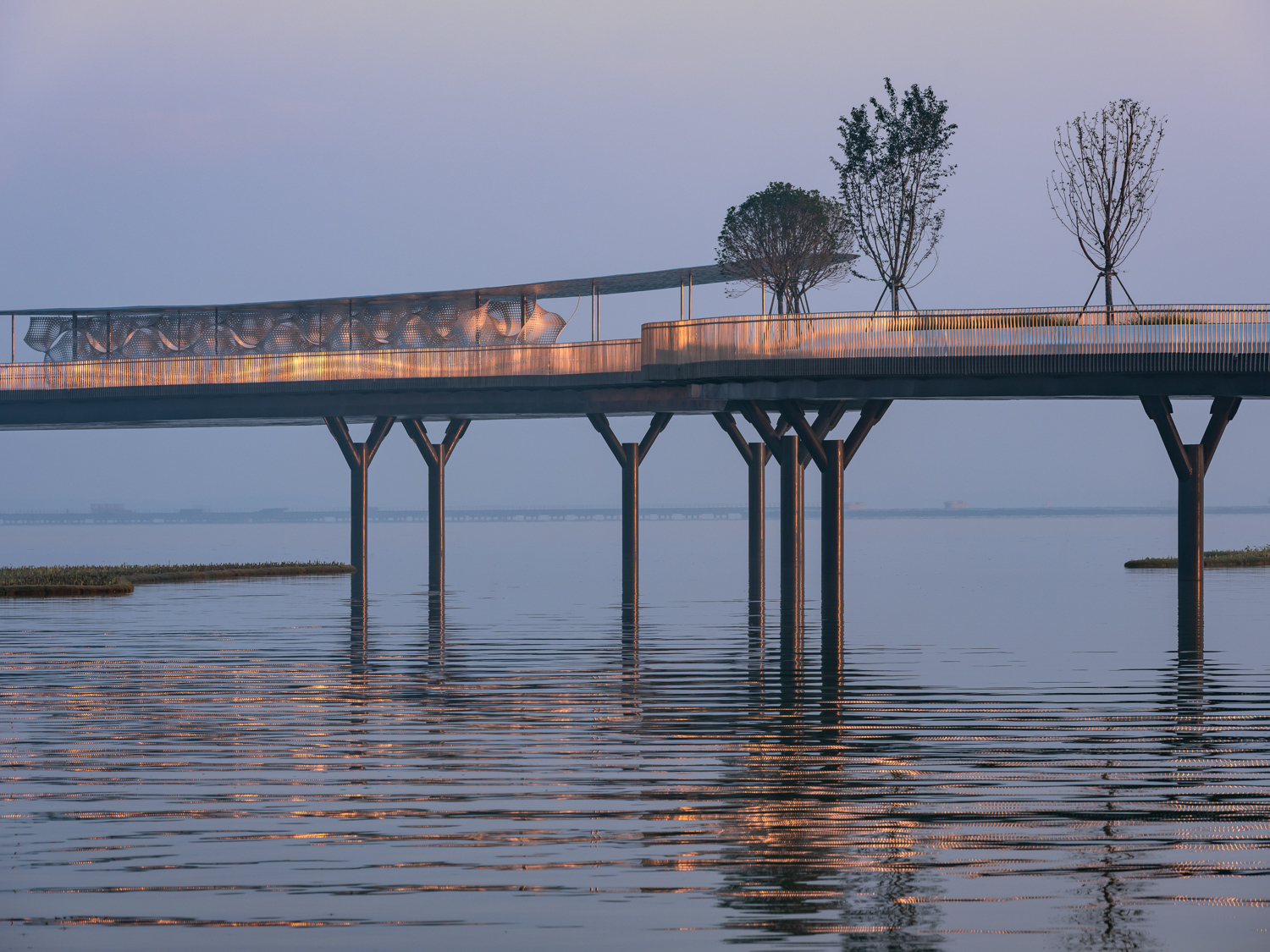
The serpentine form of the bridge conveys the winding courses of lake water while rendering diverse perceptions of the surrounding landscape when one walks from one side to the other. Similar to a traditional Chinese garden, the elongated path of the bridge contains spaces of various, alternating widths.The wider parts are designed into resting areas where people can have a seat, bask in the wind and enjoy the view of the lake.
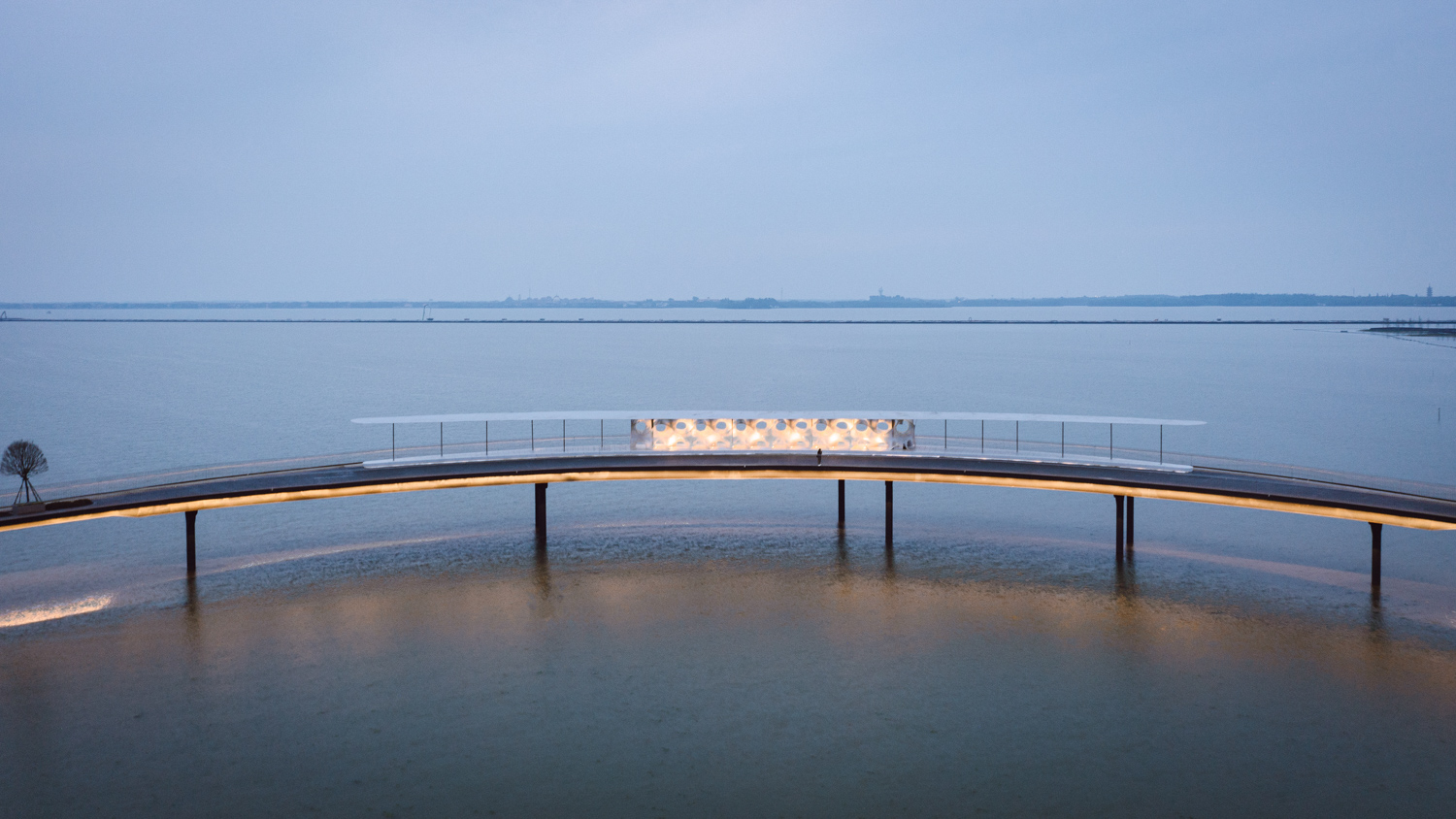

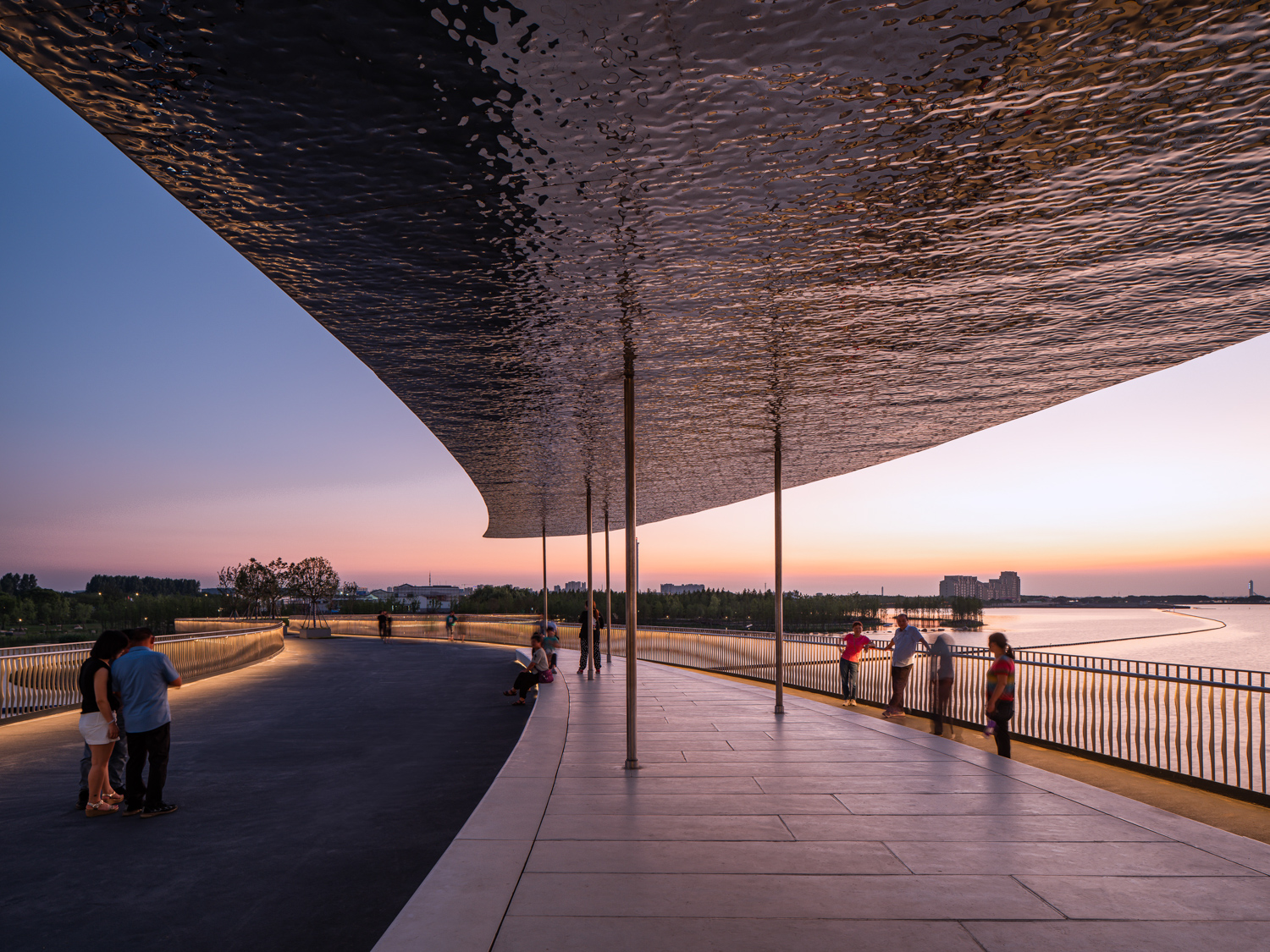
On the bridge sits a pavilion constructed with a series of slender, circular columns. The roof is made of stainless panels with an undulating pattern that blends perfectly with the water below. A sculpture is installed inside, made of white perforated stainless steel sheets, welded together into a form that reminisces a naturally deteriorated stone cave. The architecture team utlizlies computer-generated and mathematic models to help render the design, creating a seemingly randomzied yet calculated pattern of varying levels of perforation. Maximum perforation with more transparency is for the parts where the load is low while minimal perforation is for the area where strength is required to bear extra weight of the pavilion’s structure. The sculpture bears certain resemblances with TaiHu Stone, a type of natural stone found in Jiangsu, distinctive for its natural perforation.
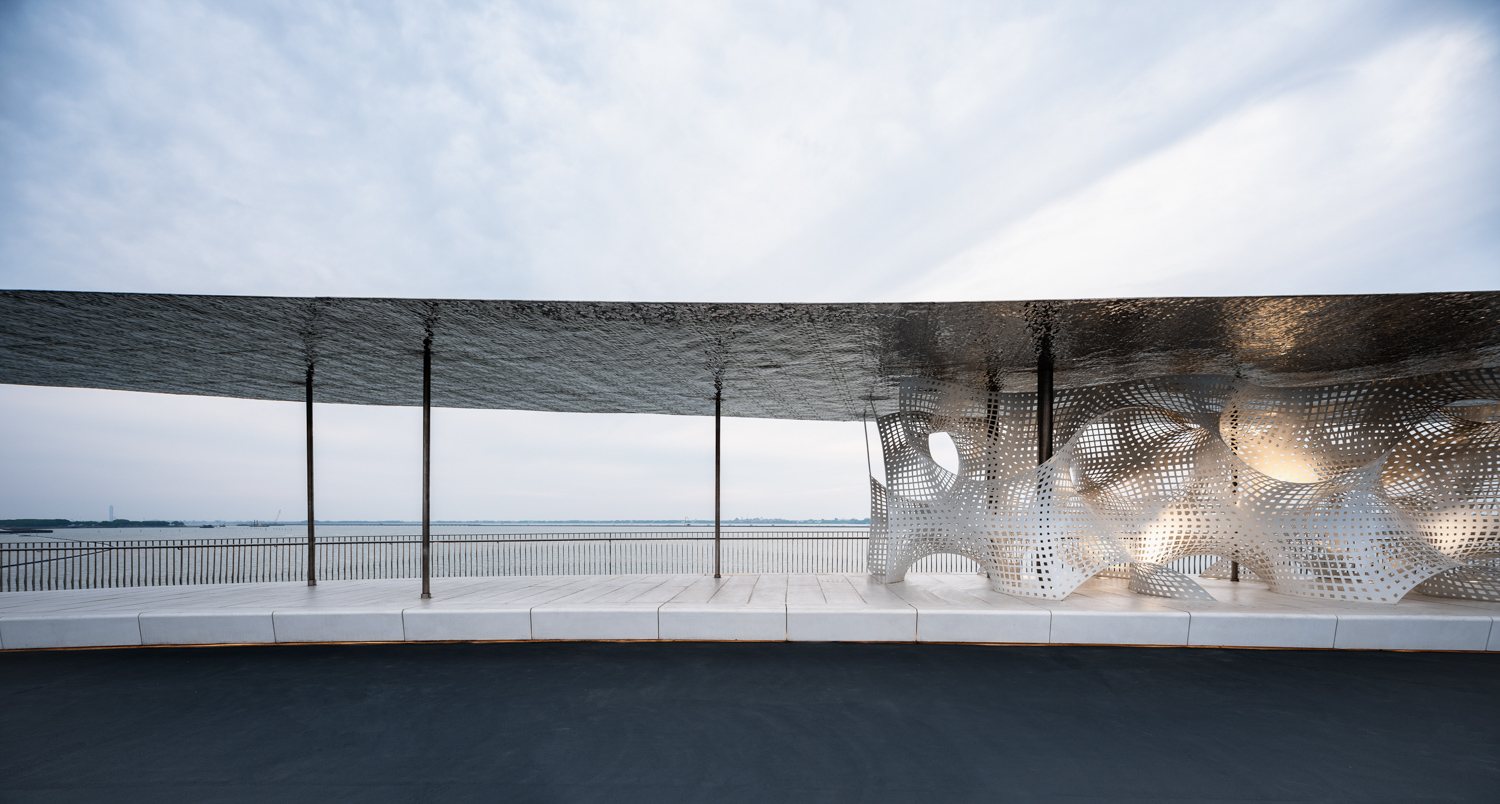
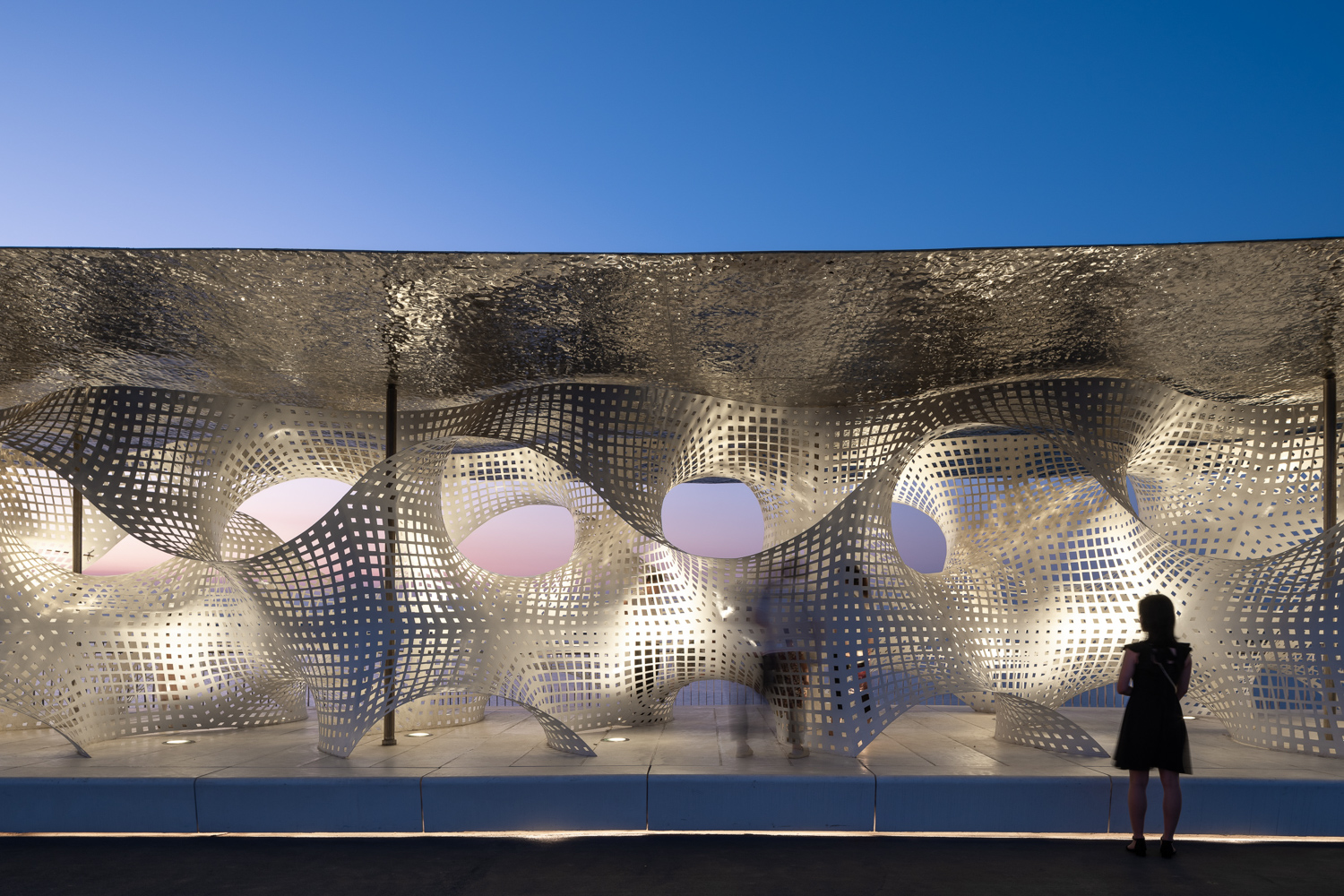
The construction of Yuandang Bridge is one of the pilot projects of China’s Yangtze River Delta Integration Plan, which aims to bring the region urban, economic, natural and environmental developments. The Yangtze River Delta region encompasses Anhui, Zhejiang, and Shanghai and Jiangsu province where the Yuandang Bride is located.
